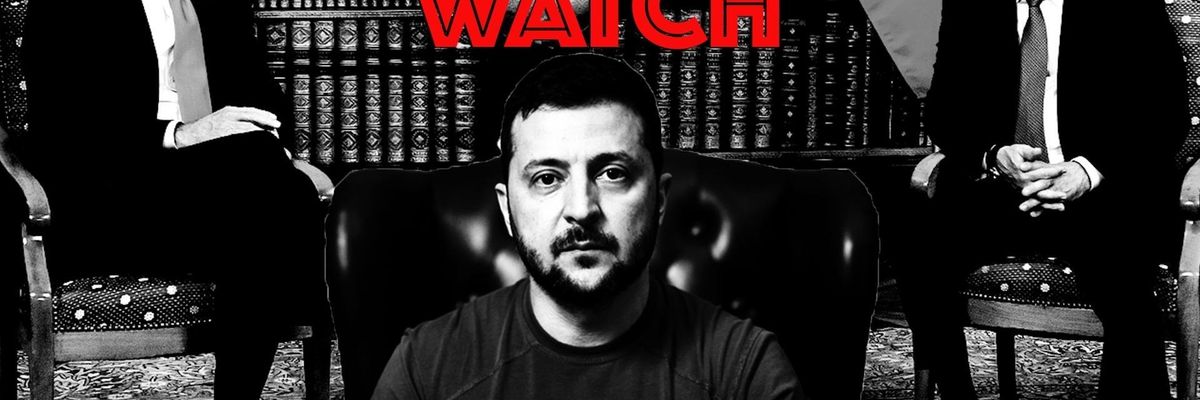Russian President Vladimir Putin went against the advice of a top aide and rejected a deal to end the war in Ukraine around the time of the invasion, according to Reuters.
Dmitry Kozak — then Russia’s top Ukraine envoy — reportedly presented Putin an agreement that would have kept Kyiv from joining NATO. But the Russian leader rejected it, according to three sources who spoke with Reuters, making clear that his objectives had expanded to include annexing parts of Ukrainian territory. Reuters was not able to determine whether the decision came before or after fighting had begun.
A Russian spokesman told Reuters that the report had “no relation to reality,” and Ukraine declined to comment on the talks, making it unclear whether Kyiv was ever fully on board with the deal.
The news, which Reuters attributed to “three people close to the Russian leadership,” highlights how close both sides might have come to either preventing or ending the war in its opening weeks.
In addition to the February deal, Russia and Ukraine reportedly reached a tentative agreement to stop the fighting in March. Kyiv seems to have been the one to balk on this second deal following a series of Russian atrocities and a carefully timed visit by then-British Prime Minister Boris Johnson, who reportedly urged Ukrainian President Volodymyr Zelensky to drop negotiations with Moscow.
The latest revelation also raises questions about what it would take to get another deal on the table. It remains unclear whether Putin himself approved the March agreement, making it difficult to gauge the peace terms that the Russian president was willing to accept in the early stages of the conflict.
Moreover, much has changed on the ground since March. Kyiv and Moscow have spent most of the intervening months in a brutal stalemate in eastern Ukraine, with both sides insisting that any negotiations will have to come after they make gains on the battlefield.
Kyiv has recently managed to break the stalemate with an unexpectedly effective counter-offensive, but the fog of war makes it hard to determine just how much land they’ve been able to take back. And Ukrainian officials still contend that they won’t stop fighting until they’ve pushed every Russian soldier off of Ukrainian territory, including Crimea, which the Kremlin considers to be part of Russia.
Regardless of how the front lines move, one thing is clear: No one in power seems particularly keen on stopping the bloodshed any time soon.
In other diplomatic news related to the war in Ukraine:
— The UN’s top nuclear watchdog said Monday that Russia and Ukraine are both “interested” in a draft agreement to secure the Russian-held Zaporizhzhia nuclear power plant, according to Reuters. Rafael Grossi, head of the International Atomic Energy Agency, added that the proposal would include a ceasefire around the plant, which has been hit by artillery shells in recent weeks. Prior to Grossi’s comments, Ukrainian officials announced their decision to shut down the plant’s last working reactor in a measure meant to reduce the chances of a nuclear catastrophe amid continued fighting.
— Putin met with Chinese President Xi Jinping yesterday on the sidelines of the Shanghai Cooperation Organization summit, marking the first face-to-face meeting between the two leaders since Russia invaded Ukraine, according to Al Jazeera. The meeting came just a few days after a senior Chinese official appeared to endorse Putin’s war for the first time during a meeting with Russian officials, according to a Kremlin readout of the conversation. As Xi and Putin grow closer, the New York Times reports that the United States and China are talking less than ever:
“After Speaker Nancy Pelosi visited Taiwan in a show of support for the self-ruled democracy that China claims as its own, Beijing canceled three rounds of military talks and postponed five others on climate and international crime. The military discussions, while sporadic and often formulaic, were still considered important in an increasingly risky environment, with American and Chinese ships often navigating perilously close to each other in the waters off China.”
— During a Wednesday mass in Kazakhstan, Pope Francis lamented the destruction in Ukraine and called for negotiations to end the war, according to the AP. “How many deaths will it still take before conflict yields to dialogue for the good of people, nations and all humanity?” Francis asked. “The one solution is peace, and the only way to arrive at peace is through dialogue.”
U.S. State Department news:
In a Tuesday press conference, State Department spokesperson Ned Price explained why the United States continues to oppose diplomacy in practice despite supporting it in principle:
“For the diplomacy and dialogue to occur, you need to have someone on the other side of the table. And we have seen no indications, our Ukrainian partners have seen no indications, our European allies and partners who have been in contact with senior Russian officials have seen no indications that the Russians are prepared to negotiate.
[...] We do see a nexus between what happens on the battlefield and what ultimately happens on any negotiating table that is to emerge. We want our Ukrainian partners to be in the most advantageous position possible if and when a negotiating table emerges. With each day of an effective counter-offensive, with each reconquest, with each inch of territory that is either defended or retaken, that position will ultimately be strengthened on the negotiating table.”
















